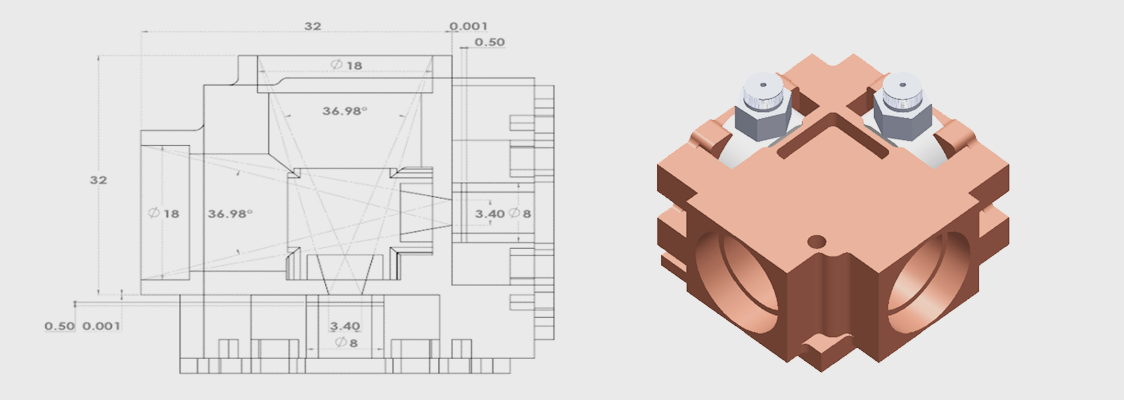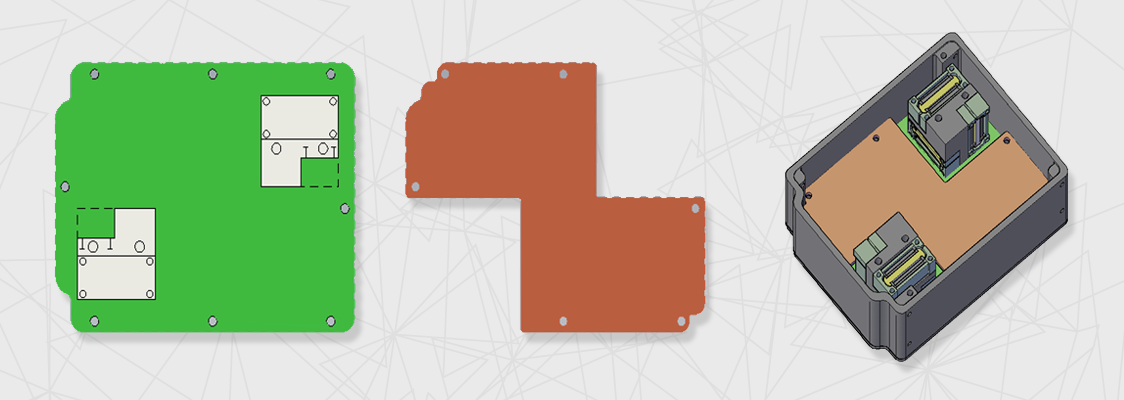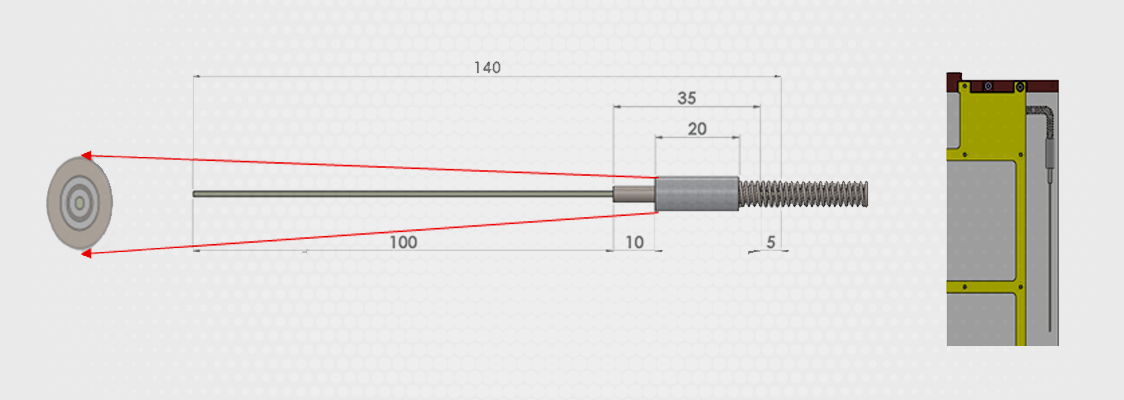1) SST (Solid State Telescope)
The Solid State Telescope (SST) is based on a silicon barrier detector and consists of two telescopes mounted on a satellite to observe the electrons moving along the geomagnetic field (pitch angle 0°) and the quasi-trapped electrons (pitch angle 90°) during observations. With a high spectral resolution of 16 channels over the 100 keV ~ 400 keV energy range, together with the pitch angle information, the designed SST will answer questions regarding the occurrence of microbursts and the interaction with energetic particles. The SST will have high temporal resolution and sampling rates of about 10~100 Hz (TBD). SST's design has the heritage of SST (Solid State Telescope) instrument onboard the Science and Technology SATellite-1 (STSAT-1) and High Energy Particle Detector (HEPD) instrument onboard the Next Generation Small Satellite-1 (NEXTSAT-1).

Figure 1. The design of the Solid State Telescope (SST) [Left: conceptual design, Right: mechanical design]
2) MAG (3-axis fluxgate MAGnetometer)
3-axis fluxgate MAGnetometer (MAG) is developed to understand characteristics of the temporal and spatial variations of the electrical currents flowing along magnetic field lines, an important transport mechanism of energy and particles between ionosphere and magnetosphere. The MAG is designed as a 3-axis magnetic field measuring instrument with Full Width at Half Maximum (FWHM) of 1 nT and high sampling rate of 10 Hz. The measurement range of MAG is -50,000 nT to +50,000 nT.

Figure 2. The design of the 3-axis fluxgate MAGnetometer (MAG) [Left: conceptual design, Right: mechanical design]
3) LP (Langmuir Probe)
The Langmuir Probe (LP) is developed for the purpose of measuring the thermal electron density and temperature to study in the high-latitude ionospheric morphology and irregularities. The LP takes advantage of the heritage of LP instrument onboard the Science and Technology SATellite-1 (STSAT-1), Korea's first science satellite launched in 2003. The LP is capable of measuring the electron density of 2×〖10〗^3- 5×〖10〗^6 / 〖cm〗^3. The SNIPE will consist of multiple satellites equipped with LPs with high sampling rates (less than 1 s). The LP observations in high temporal (less than 1 s) and spatial (10 km–50 km) resolutions enable us to comprehensively investigate the significant phenomena to be examined in the high-latitude ionospheric morphology and irregularities such as sub-auroral trough and polar cap patches.

Figure 3. The design of the Langmuir Probe (LP) [Left: cross section, Center: mechanical design, Right: Position of the LP]




